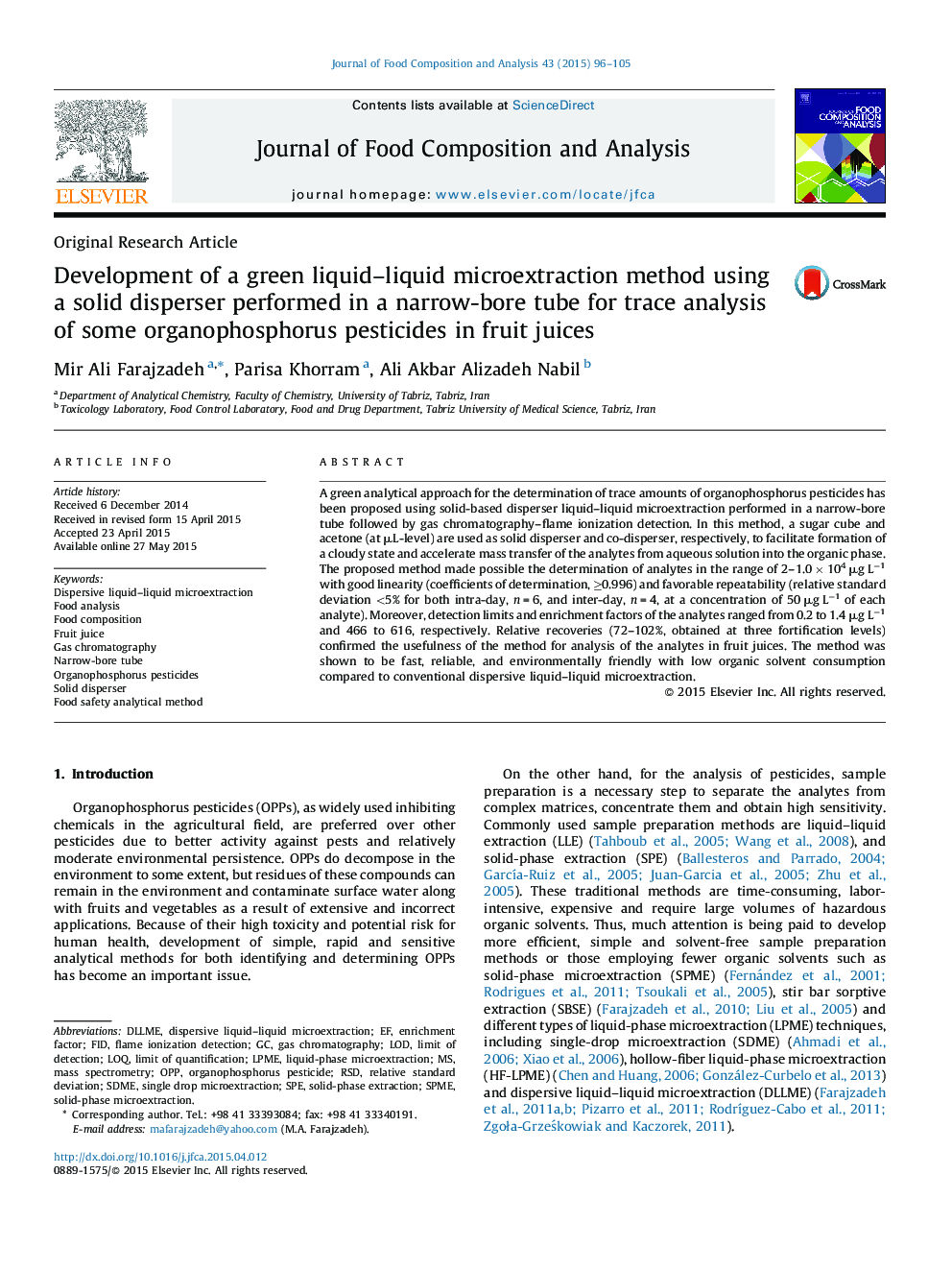| Article ID | Journal | Published Year | Pages | File Type |
|---|---|---|---|---|
| 1218088 | Journal of Food Composition and Analysis | 2015 | 10 Pages |
•A green microextraction method using a solid disperser has been developed.•The method was utilized for determination of organophosphorus pesticides in juices.•Employment of a sugar cube reduced the consumption of toxic organic solvents.•By using a narrow-bore tube, the method is applicable for large volumes of sample.
A green analytical approach for the determination of trace amounts of organophosphorus pesticides has been proposed using solid-based disperser liquid–liquid microextraction performed in a narrow-bore tube followed by gas chromatography–flame ionization detection. In this method, a sugar cube and acetone (at μL-level) are used as solid disperser and co-disperser, respectively, to facilitate formation of a cloudy state and accelerate mass transfer of the analytes from aqueous solution into the organic phase. The proposed method made possible the determination of analytes in the range of 2–1.0 × 104 μg L−1 with good linearity (coefficients of determination, ≥0.996) and favorable repeatability (relative standard deviation <5% for both intra-day, n = 6, and inter-day, n = 4, at a concentration of 50 μg L−1 of each analyte). Moreover, detection limits and enrichment factors of the analytes ranged from 0.2 to 1.4 μg L−1 and 466 to 616, respectively. Relative recoveries (72–102%, obtained at three fortification levels) confirmed the usefulness of the method for analysis of the analytes in fruit juices. The method was shown to be fast, reliable, and environmentally friendly with low organic solvent consumption compared to conventional dispersive liquid–liquid microextraction.
